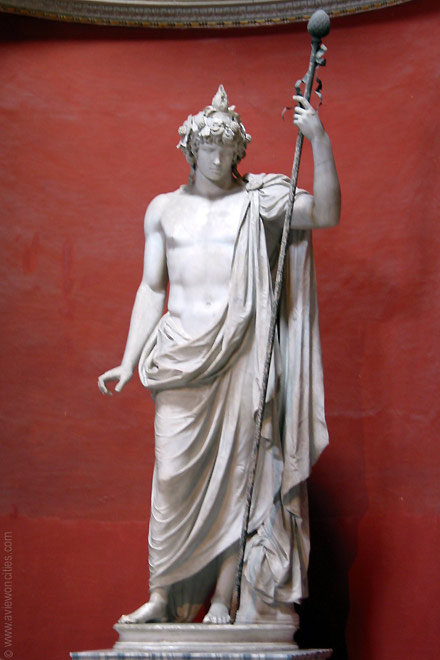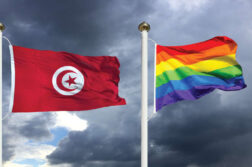WHERE TO GO in Europe this year? That’s the question that confronted me as I started planning this year’s gay history trip for Oscar Wilde Tours. Last year’s tour followed our patron saint Oscar Wilde through his life, starting in Dublin, traveling to London, and ending in Paris.
This year, we decided to focus on one country, and the sole criterion would be which country had the most gay history of all. And that’s a tough competition. Greece is an obvious contender, and, for quite different reasons, so are France and Germany. But in the end the winner-take-all had to be Italy.

After all, think of the Roman emperors, such as Nero, who married two of his male slaves (one as the wife, the other as the husband); or Hadrian, who had his boyfriend Antinous made into a god after he drowned in the Nile. There are so many statues of Antinous that we could almost do an Antinous tour: here he is, for instance—in the Vatican!—as a combination of the Roman god of wine Bacchus and the Egyptian fertility god Osiris. And think of the major Renaissance artists who were gay or at least fascinated by sexy male bodies: Donatello, Botticelli, Leonardo, Michelangelo, Cellini, Caravaggio. Italy is full of artworks like Donatello’s David—the first fully nude male statue since ancient times—and who but a Renaissance Italian would have thought to portray a biblical hero as a sexy, effeminate boy? After we thought about it for a while, the choice was clear.
We all go to Italy and marvel at its fascinating, multi-level history and its wonderful artworks—but even gay people never put the many stories of same-sex love together in their minds and think about how very gay Italian art and history are. This will be the focus of our Italy tour. We’ll visit many of the major historical monuments and look at a lot of gorgeous art, but we’ll keep the same-sex side of it all in the foreground—even when touring the Vatican Museum!

Beyond that, given limited time to travel, where in Italy should we go? Rome is a no-brainer: there is probably no other city with as many beautiful places or views and as much history on display. Also, a lot of its history is gay history: from the Castel Sant’Angelo—which started out as Hadrian’s tomb—to the city’s huge collection of Caravaggios, to modern gay Italians like Pasolini and Valentino. And we couldn’t really skip Florence either, since it was there that the Renaissance rediscovered the ancient world’s same-sex customs—a discovery embodied in artworks throughout the city, particularly the two famous Davids, those of Donatello and Michelangelo.
After that, the choices become more nuanced. In the end I think the biggest bang for the Euro is the area around Naples, which
includes sites and artworks reflecting same-sex customs from the ancient Greeks and Romans to the Renaissance, and then on to the gay
beach scene of early 20th-century Capri. Of course, it doesn’t hurt that Naples is one of the great culinary capitals of Italy, the homeland of many of the great pasta dishes, of pizza (invented, it is generally believed, at a restaurant that’s on the itinerary), and mozzarella.
In short, I think we have managed to put together a trip that will give our passengers an experiences of many of Italy’s pleasures while revealing its many-faceted gay history—showing them why we think that Italy has the gayest history of any country.






Discussion5 Comments
I really would enjoy Andrew Lear’s planned itinerary for the gay-related sights of Rome, one of the world’s most beautiful cities, but I would also enjoy the sites of “Fellini’s Satryicon”, where Encolpio, Ascilto and Gitone lived out their wild lifestyle.
The GLR is happy to sponsor Oscar Wilde Tours’ tour of “Gay Italy, from Caesar to Michelangelo and Beyond,” and GLR readers can get a $400 discount off the price by calling 646-560-3205 and giving the promotion code ‘GLR’.
Roman history is our history. Roman history is gay history, so many of our archetypes and depictions of Gods are based on a same sex sexual relationship. It is amazing how present day Romans see themselves, the pure icon of the male nude. I feel what we can take from Gay and Lesbian Roman culture is an attitude of homosexuality as being self serving, and self appreciating it is revolutionary to think that history has never changed we have always been the same homosexual society we are now but only in the modern age we have to set our path based on commerce and commercialism
Pingback: Gay Italy tour in October! | Demo Server
Pingback: Gay Italy tour in October! | Oscar Wilde Tours